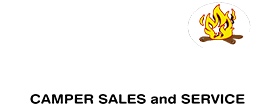RV Awning Care
 Awnings are incredibly handy features for RVs. They increase your RV’s sheltered space by quite a bit, and they give you the ability to spend more time in the fresh air. They’re helpful in both searing heat and pouring rain, and when properly maintained, they last for years. But maintaining them properly requires some effort and a little bit of knowledge about how they’re made. Read on to learn the things you need to know about maintaining your RV awning. When you need to replace or repair your awning, come by Camp Site RV. We’re located in Cresco, Iowa, and we proudly serve Cedar Falls, Iowa, Rochester, Minnesota, and La Crosse, Wisconsin.
Awnings are incredibly handy features for RVs. They increase your RV’s sheltered space by quite a bit, and they give you the ability to spend more time in the fresh air. They’re helpful in both searing heat and pouring rain, and when properly maintained, they last for years. But maintaining them properly requires some effort and a little bit of knowledge about how they’re made. Read on to learn the things you need to know about maintaining your RV awning. When you need to replace or repair your awning, come by Camp Site RV. We’re located in Cresco, Iowa, and we proudly serve Cedar Falls, Iowa, Rochester, Minnesota, and La Crosse, Wisconsin.
Types of Awning
The majority of awnings are made from one of two materials: acrylic or vinyl. How you maintain your awning will depend on the material from which it’s constructed. Acrylic awnings are made from a petroleum-based product that’s similar to a plastic. This material is naturally mold-resistant, meaning you don’t have to go out of your way to keep it from a mildew outbreak. It’s worth noting, however, that this material can melt easily—it’s essentially the same fabric that you see used in tent construction. Be careful using a grill or space heater under an acrylic awning.
The other common type of awning fabric is vinyl. Vinyl is more likely to spawn an outbreak of mold, and so it’s often coated in an anti-fungal agent. You don’t want to damage this coating, so it’s best to avoid using hard scrub brushes when cleaning vinyl.
Common Awning Problems
Awnings are prone to a few different problems. One of the most insidious problems is mold and mildew. (Mold and mildew are essentially the same thing, but mildew is the term many people use for the type of smelly, infectious mold that is so often found in damp camping gear.) Mold is common in areas with moisture and enough organic matter for the fungus to eat. It also helps if there is limited air movement and enough warmth to make them grow faster. Typically, awnings that are rolled when they’re still wet and dirty will be the most likely to sprout mildew.
Wind damage is another extremely common RV awning problem. An awning acts like a sail in high winds, and if the wind blows hard enough, the awning may tear off its frame or damage the frame. To prevent wind damage, always roll your awning when the wind starts to pick up, and keep your awning rolled up through the night and when you leave your RV for a significant period of time.
The final common RV awning problem is UV light damage. Over time, UV light will start to weaken your awning’s fabric, making it more brittle and easily torn. It can also bleach away the colors and patterns on the fabric, making it look less vibrant and new. It’s worth noting that your awning is absorbing that light so you don’t have to, but to prevent it from absorbing too much UV light, roll it up when it’s not in use. Some models also have an optional metal sheath to cover the awning when it’s not in use.
Repairing or Replacing Your Awning
Awnings have to put up with quite a bit of stress, and it’s really easy for small problems to quickly become big problems. Getting your awning repaired early is the best way to insure that it lasts as long as possible. If your awning is severely damaged, you might need to get it replaced. Either way, an experienced RV technician will help you figure out the best path forward. Here at Camp Site RV, our team of RV experts will help you find the solution to your RV awning problems. Our service center and dealership is located in Cresco, near Cedar Falls, Iowa, and we proudly serve Rochester, Minnesota as well as La Crosse, Wisconsin. Stop by today to learn more!

